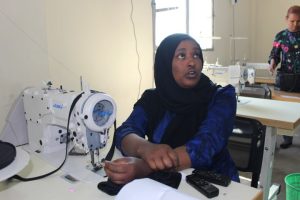
ADDIS ABABA – Ethiopia is making significant strides in addressing post-harvest management (PHM) challenges through various interventions and strong collaboration with stakeholders, according to the Ministry of Agriculture (MoA).
Agriculture State Minister Meles Mekonen (PhD) stated that Ethiopia has set a vision to reduce post-harvest losses to below 5% by 2050. The country has developed a food system transformation roadmap that prioritizes post-harvest management, aiming to deliver transformative solutions.
“We are working to achieve this vision through seamless coordination and collaboration with stakeholders in areas such as capacity building, awareness creation, and increased investment,” he said.
Highlighting the status of food waste and loss in Ethiopia, Meles noted that the country currently loses 20-30% of grain crops, 30-50% of horticultural crops, and 40% of animal and dairy products annually. These losses amount to an estimated 12 million tons of food per year.
The economic impact is profound. Globally, food waste and losses cost approximately one trillion USD annually, while Ethiopia loses over six billion USD in grain, horticulture, and livestock products, including around 3.1 million USD in livestock-related losses. From a food and nutrition security perspective, the 12 million tons of food lost could have fed approximately 46 million people, the State Minister explained.
He identified several challenges hindering effective post-harvest management in Ethiopia, including inadequate policies and strategies, outdated practices, limited access to post-harvest technology, insufficient financing, weak institutional capacity, and poor infrastructure.
To address these issues, the Ethiopian government has introduced comprehensive policies and strategies. These include the National Post-Harvest Management Strategy (2023), the National Food Safety and Quality Strategy, and the National Food System Transformation plan, all formulated in the same year. Platforms such as the Ethiopian Society of Post-Harvest Management have also been established to engage diverse stakeholders in addressing PHM concerns.
Additionally, a baseline assessment of post-harvest losses has been conducted, and customized methodologies for PHM have been developed. The ministry has also delivered extensive training programs on post-harvest handling techniques to improve capacity across the sector.
The Ministry aims to halve post-harvest losses in grains, horticulture, and animal products by 2030. “This effort contributes to national goals, including ensuring food and nutrition security, promoting industrialization, creating jobs, boosting exports, and fostering environmental stewardship,” Meles emphasized.
Through improved PHM, the Ministry also seeks to reduce stunting rates and ensure a sustainable food system that enhances Ethiopia’s food and nutrition security.
BY BETELHEM BEDLU
THE ETHIOPIAN HERALD SATURDAY 9 NOVEMBER 2024





